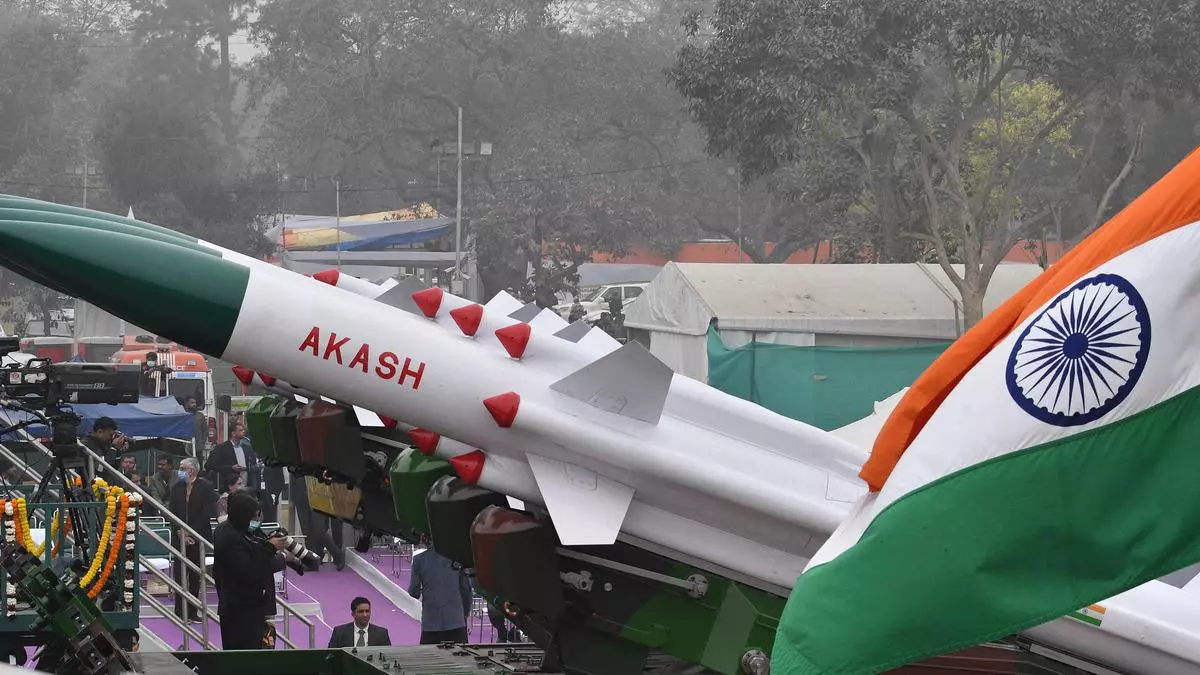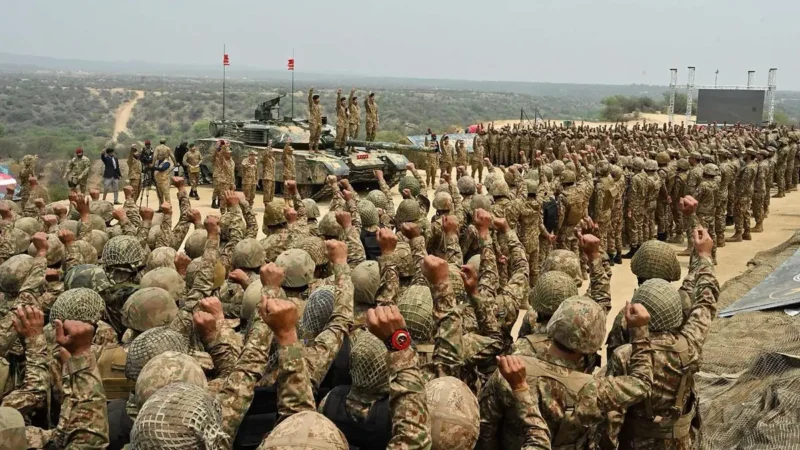India’s Extraordinary Defence Export Evolution: Navigating Challenges, Fostering Innovation

India’s meteoric rise in defence exports throughout the fiscal year 2022-23, which culminated into an incredible revenue of approximately Rs 16,000 crore, signifies a monumental achievement in the country’s strategic and economic domain. Beyond the realm of mere statistical accomplishment, this notable feat stands as evidence of the nation’s strategic reorientation in both approach and policy. The quantum leap in defence export revenue is substantial and noteworthy, driven by a confluence of policy, institutional, and technological factors. Essential to the export upswing has been a change in the governmental approach—aiming to reduce the country’s massive import dependency while advancing the agenda on exports. The transition from a meagre arms export figure a decade ago to the current pinnacle represents a sweeping transformation. Remarkably, this recent accomplishment surpasses New Delhi’s defence export revenue of Rs 1,521 crore in 2016-17 by more than tenfold. What adds to the astonishment is the realization that a mere decade ago, India’s arms exports were valued at a modest Rs 686 crore, underscoring the extraordinary progress achieved.
Contextualizing India’s Defence Export Surge:
The surge in India’s defence exports becomes even more remarkable when viewed against the backdrop of its historical status as the world’s largest arms importer. Despite the recent quantum leap, data from the Stockholm International Peace Research Institute (SIPRI) underscores India’s persistent role as a significant buyer, accounting for more than 10% of global arms imports between 2012-17 and 2018-22. While the narrative is shifting, and India is progressing in the right direction, it’s essential to acknowledge the existing gap between being a major importer and establishing external dependencies akin to dominant players like the US, France, Russia, and Israel.
Foundations of India’s Defence Export Momentum:
Central to India’s recent surge in defence exports is the government’s strategic philosophy embodied in the Defence Production and Export Promotion Strategy (2020). This foundational framework delineates specific export targets and benchmarks, with the ambitious goal of achieving $5 billion in defence export revenue by 2025 acting as a pivotal force driving New Delhi’s export growth. The emphasis on first building a robust domestic defence manufacturing framework aligns with a rational and logical approach – the absence of advanced and developed manufacturing capacity would preclude any meaningful inventory for export.
Policy Instruments Driving Defence Manufacturing:
Beyond the overarching strategy, specific policy instruments have been instrumental in catalysing the capacity and scale of India’s domestic defence industry. Affirmative indigenisation lists, directing the procurement of military equipment and spare parts exclusively from Indian manufacturers, have been a proactive step to create market opportunities and incentives for domestic producers. Simultaneously, a substantial portion of the defence capital procurement budget has been allocated exclusively for the benefit of the Indian industry, fostering an environment conducive to indigenous innovation and production.
Liberalized licensing and certification norms further facilitate defence exports, preventing bureaucratic processes from stifling them. The whole-of-government approach, with the Ministry of External Affairs actively promoting Indian defence platforms through embassies and missions abroad, coupled with providing defence credit lines to foreign countries, demonstrates a concerted effort to boost exports.
Diversification and Innovation in Defence Exports:
The impact of these measures is vividly reflected in the export data over the recent years. According to government statistics, India’s defence exports amounted to Rs. 1,910 crore in 2014-15. This figure saw an uptick to Rs. 2,059.18 crore in 2015-16, only to experience a dip to Rs. 1,521 crore in the fiscal year 2016-17.
Subsequently, there was a notable surge in the export trajectory, reaching Rs. 4,682 crore in 2017-18 and surging dramatically to Rs. 10,745 crore in 2018-19. Despite a COVID-19-induced downturn, with export values at Rs. 9,115 crore in 2019-20 and Rs. 8,434 crore in 2020-2021, there was a remarkable rebound in export revenue to Rs. 12,814 crore in 2020-21. This data underscores the resilience and positive outcomes of the strategic initiatives taken to fortify India’s defence manufacturing capabilities.
While a substantial portion of India’s defence exports comprises small parts and components, playing a pivotal role in the intricate machinery of defence systems, the export catalogue also encompasses diverse items such as radars, thermal technology, offshore patrol vessels, bulletproof helmets, and jackets. This inclusive approach reflects a commitment to enhancing personal protective equipment and catering to a comprehensive spectrum of defence needs.
A notable development is the initiation of exports involving dual-use defence technologies, indicating an expansion of India’s role in providing technologies with both civilian and defence applications. This showcases a versatile and innovative approach, positioning India as a provider of solutions with broader implications beyond the military domain.
Challenges on the Horizon:
However, as India sets its sights on the ambitious $5 billion defence export target by 2025, formidable challenges need meticulous attention. The imperative for enhanced cohesion among key stakeholders – the Ministry of Defence, armed forces, private manufacturers, and Defence Public Sector Undertakings (DPSUs) – is paramount. The collaborative development of a comprehensive roadmap for promoting and selling designated weapons platforms and systems in foreign markets ensures a synchronized and impactful presentation of indigenous defence products, enhancing their global market appeal.
A strategic focus is required on identifying and penetrating markets for high-value platforms, such as the Light Combat Aircraft Tejas, the Advanced Towed Artillery Gun System (ATAGS), and the BrahMos cruise missile. These platforms hold immense financial potential, and expanding their exports will significantly contribute to achieving the ambitious revenue targets.
India must shed its historical ambivalence and ad hoc approaches to defence exports. A decisive shift towards consistent policymaking is imperative. The government must continuously ideate and implement institutional reforms, breaking away from traditional practices. This transformation is vital for India to ascend the ranks and secure a position among the top 20 global defence exporters.
Monumental Strides in Defence and Armed Forces Modernization:
The year 2023 stands as a testament to India’s commitment to a robust and self-reliant defence ecosystem. The Ministry of Defence (MoD), under the visionary leadership of Prime Minister Shri Narendra Modi, achieved monumental strides in realizing the Government’s vision for a strong, secure, and inclusive India.
Positive Indigenisation Lists:
The release of the Fifth Positive Indigenisation List (PIL) by Raksha Mantri Shri Rajnath Singh showcased the inclusion of highly complex systems, sensors, weapons, and ammunition. This strategic move towards self-reliance and indigenous procurement aligns seamlessly with the Defence Acquisition Procedure 2020.
Record Defence Production:
The fiscal year 2022-23 witnessed a historic moment as the value of defence production crossed Rs one lakh crore, a significant increase from Rs 95,000 crore in the previous fiscal year. The Government’s collaboration with defence industries, policy reforms, and the integration of Micro, Small & Medium Enterprises (MSMEs) and start-ups into the supply chain contributed to this remarkable success.
Record Defence Exports:
The Government’s consistent policy initiatives and the robust contribution of the defence industry led to a record-high of approximately Rs 16,000 crore in defence exports for the fiscal year 2022-23. India’s export footprint expanded to over 85 countries, showcasing the global recognition of the country’s defence capabilities.
Domestic Industry Support:
A record 75 per cent of the defence capital procurement budget, approximately Rs one lakh crore, was earmarked for the domestic industry in the fiscal year 2023-24. This marked a significant increase from 68 per cent in the previous fiscal year, reinforcing the government’s commitment to boost the domestic defence manufacturing ecosystem.
Key Achievements:
HAL Helicopter Factory: The dedication of Hindustan Aeronautics Limited (HAL) Helicopter Factory by Prime Minister Shri Narendra Modi marked a key milestone. The factory, India’s largest helicopter manufacturing facility, is set to produce Light Utility Helicopters (LUHs), showcasing India’s prowess in indigenous design and development.
PM’s Tejas Sortie: Prime Minister Shri Narendra Modi’s sortie in the ‘Tejas’ Twin-Seater Light Combat Fighter aircraft demonstrated India’s capability in aerospace technology and manufacturing.
DAC Approvals: The Defence Acquisition Council (DAC) granted Acceptance of Necessity (AoN) for various capital acquisition proposals, including BrahMos missiles, Shakti EW systems, Utility Helicopters-Maritime, and other critical defence assets, reinforcing the modernization efforts across the three armed forces.
Infrastructure Development by BRO: The Border Roads Organization (BRO) achieved significant milestones in infrastructure development, completing strategically important projects in record time. This includes bridges, roads, and telemedicine nodes in Border States and Union Territories.
Nari Shakti in Defence: Women officers achieved historic milestones in various branches of the armed forces, from being operationally deployed in challenging locations like Siachen to commanding combat units and naval warships. These achievements underscore the growing role of women in enhancing military prowess.
The Ministry of Defence’s comprehensive approach towards self-reliance, indigenisation, and modernization has not only strengthened India’s defence capabilities but also positioned the country as a global player in the defence manufacturing arena. The commitment to inclusivity, innovation, and strategic partnerships with the private sector reflects a vision for a resilient and self-sufficient India in the defence sector. The culmination of these achievements paints a vivid picture of India’s transformative journey towards becoming a stalwart in the global defence export, setting the stage for sustained growth and influence on the world stage. In conclusion, overcoming these challenges and executing strategic reforms will empower India to significantly enhance its defence export capabilities. This not only promises substantial economic gains but also reinforces the country’s security infrastructure. The comprehensive and deliberate approach outlined here is crucial for positioning India as a major player in the global defence market. The synergy between the surge in defence exports and the monumental strides in defence and armed forces modernization in 2023 consolidates India’s position as a formidable force in the international arena.






